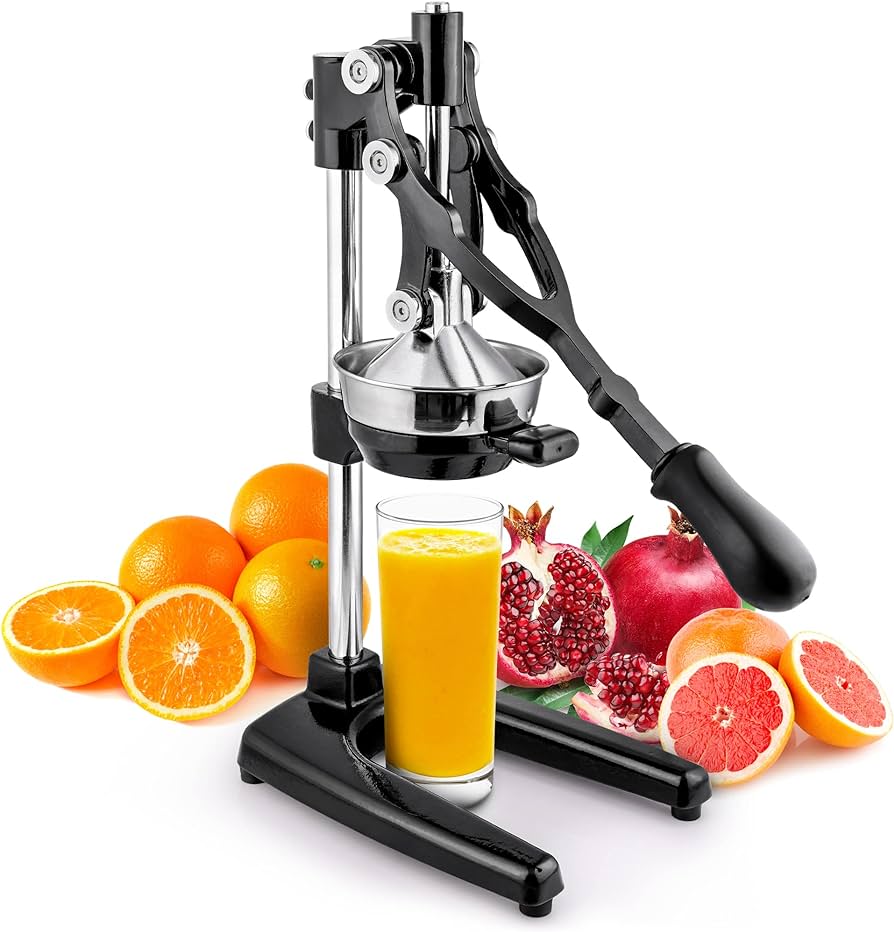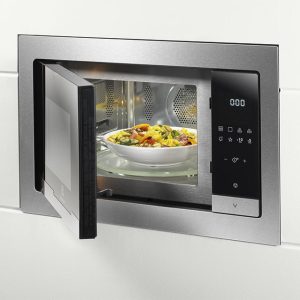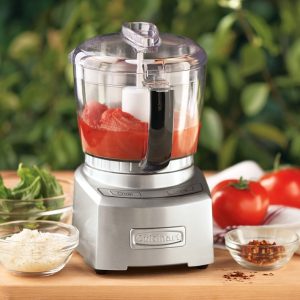
Introduction:
Using a manual citrus juicer is a practical and efficient way to extract fresh juice from citrus fruits like lemons, limes, oranges, and grapefruits. This comprehensive guide delves into the different types of manual citrus juicers, step-by-step instructions on how to use them, tips for maximizing juice yield, maintenance guides, and creative uses for the leftover pulp and zest. Understanding the process will ensure you get the best results every time you juice.
How to Use a Manual Citrus Juicer?
Types of Manual Citrus Juicers
Various types of manual citrus juicers are designed to cater to different needs and preferences. Here’s an overview of the most common types and their specific benefits.
Handheld Reamers: Handheld reamers are simple, one-piece tools with a ridged conical end. They are ideal for quick, small-scale juicing and are highly portable and easy to clean.
Citrus Presses: Citrus presses, also known as hand presses or squeezers, have a hinged design with a concave compartment to hold half a citrus fruit. These presses use leverage to squeeze the juice out efficiently.
Juice Extractors: Manual juice extractors often feature a reamer on top of a collection bowl. Many come with a built-in strainer to separate seeds and pulp, providing effortless juicing for larger quantities.
Glass or Plastic Reamers: These are stationary reamers often made from glass or durable plastic, fixed above a juice collection vessel. They combine the simplicity of a handheld reamer with the added convenience of a built-in container.
Professional Manual Juicers: Professional manual juicers, also known as manual citrus presses or lever presses, resemble industrial machinery with a heavy-duty lever and built-in strainer. These are suitable for juicing large quantities with minimal effort.
Preparing Citrus Fruits for Juicing
Proper preparation of citrus fruits is essential for maximizing juice extraction and achieving the best flavor. Here’s how to prepare your fruits before using a manual juicer.
Choose Fresh, Ripe Citrus: Select fresh, firm citrus fruits that feel heavy for their size. The skin should be bright and free from soft spots or blemishes. Ripe fruits yield more juice and have a better flavor.
Wash Thoroughly: Rinse the citrus fruits under cold running water to remove dirt, residues, and any potential pesticides. This step ensures cleanliness, even if you don’t use the peel.
Room Temperature: Use room-temperature citrus fruits as they are easier to juice. If your fruits are stored in the fridge, let them sit out for about 30 minutes or warm them slightly by placing them in warm water for a few minutes.
Roll the Citrus: Before cutting, roll each fruit on the countertop with gentle pressure from your palm. Rolling helps break down the fibers inside, making juice extraction easier.
Cutting: Cut the citrus fruits in half horizontally. For smaller citrus fruits like lemons and limes, you can use quarters or segments to make the juicing process more manageable.
Using a Handheld Reamer
A handheld reamer is a straightforward tool for juicing small quantities. Follow these steps to use it effectively.
Place the Citrus Half: Hold one half of the citrus fruit firmly in your hand, cut side facing upwards. Position the reamer’s ridged end into the center of the fruit.
Applying Pressure: Twist the reamer back and forth while applying slight downward pressure. The ridges will break open the juice sacs, releasing the juice. Continue until all the juice is extracted.
Collecting Juice: Hold the fruit over a bowl or glass to catch the juice. Some reamers are equipped with a built-in collection cup for convenience.
Straining Seeds: If the reamer doesn’t have a built-in strainer, pour the juice through a fine mesh strainer to remove seeds and excess pulp.
Using a Citrus Press
A citrus press uses leverage to extract juice efficiently. Here’s a step-by-step guide on how to use it.
Position the Citrus Half: Place the citrus half cut side down into the concave compartment of the press. Ensure it fits snugly without overflowing.
Closing the Press: Close the handles of the press together firmly. The concave base will invert the citrus half, squeezing out the juice through the small holes.
Applying Pressure: Squeeze the handles tightly to maximize juice extraction. The leverage makes it easier to extract more juice with less effort.
Collecting Juice: Hold the press over a glass or bowl to catch the juice. Many citrus presses also come with a built-in juice collection compartment with a spout for easy pouring.
Using a Juice Extractor
A manual juice extractor combines the simplicity of a reamer and a collection bowl. Here’s how to use it effectively.
Place the Citrus Half: Place the citrus half cut side down on the reamer attached to the collection bowl. Some extractors have a built-in strainer to separate seeds and pulp.
Twisting Motion: Twist the citrus half back and forth on the reamer while applying slight downward pressure. The reamer’s ridges help break open the juice sacs.
Continuous Pressure: Continue twisting until you’ve extracted all the juice. Rotate the fruit occasionally to ensure even extraction from all juice segments.
Collecting Juice: The juice collects in the bowl beneath the reamer. When finished, pour the juice from the collection bowl into your desired container.
Using a Professional Manual Juicer
For large quantities of juice or heavy-duty usage, professional manual juicers are ideal. Follow these steps to use them efficiently.
Prepare the Juicer: Place the juicer on a sturdy surface. Align the juice collection cup or container beneath the spout if the juicer has one.
Position the Citrus Half: Place the citrus half cut side down in the juicer’s compartment. Some professional juicers have a strainer and a lever that presses the fruit.
Lower the Lever: Pull down the lever firmly to press the citrus half. The built-in strainer separates the juice from seeds and pulp.
Applying Consistent Pressure: Apply consistent downward pressure until all the juice is extracted. Lift the lever and position another citrus half if juicing multiple fruits.
Collecting Juice: The juice collects in the attached cup or container beneath the spout. Pour it out when done, or continue juicing depending on the desired quantity.
Tips for Maximizing Juice Yield
Maximizing juice yield involves utilizing techniques that ensure you extract the most juice from each fruit. Here are some tips.
Warm the Citrus: Warm citrus fruits yield more juice. Let them sit at room temperature or warm them in slightly warm water before juicing.
Roll the Citrus: Roll the citrus fruit on the countertop with gentle pressure to break up internal fibers, making juice extraction more efficient.
Use Proper Technique: Ensure you apply consistent, firm pressure when juicing. Twisting the fruit during juicing maximizes exposure to the reamer or press, releasing more juice.
Re-Squeezing: After initial juicing, re-squeeze the pulp by hand or with another juicing tool. This step yields additional juice that might remain in the fruit.
Strain for Clarity: Pour the extracted juice through a fine mesh strainer to remove any remaining seeds and pulp, ensuring a smooth and clear juice.
Maintenance and Care for Manual Citrus Juicers
Proper maintenance and care extend the lifespan of your manual citrus juicer and ensure it functions optimally. Follow these guidelines for effective maintenance.
Cleaning After Use: Always clean the juicer immediately after use. Rinse thoroughly with warm water to remove pulp and juice residue. For stubborn residue, use a small brush to scrub the components.
Disassemble When Possible: Disassemble the juicer components if they are detachable. This step allows for thorough cleaning of all parts, preventing build-up and ensuring hygiene.
Avoid Abrasive Cleaners: Refrain from using abrasive cleaners or steel wool on your juicer, as these can damage the surface. Instead, use mild dish soap and a soft sponge or cloth.
Dry Completely: Ensure all the parts are dried completely before reassembling or storing the juicer. Moisture can cause rust or mold growth, particularly on metal parts.
Regular Inspection: Periodically inspect your juicer for signs of wear and tear or damage. Replace any worn-out parts to maintain optimal performance.
Creative Uses for Leftover Pulp and Zest
Leftover pulp and zest can be repurposed in creative ways to enhance other dishes or reduce waste. Here are some ideas.
Culinary Uses of Pulp: Use the citrus pulp in smoothies, muffin batters, and marinades for added flavor and moisture. It can also be mixed with yogurt or added to sauces.
Flavor Infusions: Add citrus pulp to water, tea, or cocktails for a refreshing infusion. It imparts a subtle citrus flavor and a bit of texture to your drinks.
Homemade Marmalade: Combine the pulp and zest with sugar and water to make homemade marmalade. This spread is perfect for toast, pastries, or as a topping for desserts.
Citrus-Infused Vinegar: Infuse vinegar with citrus pulp and zest for a unique flavored vinegar. It can be used in salad dressings, marinades, or as a natural cleaning agent.
DIY Cleaning Solutions: Use leftover citrus peel to create natural cleaning solutions. The natural oils in the peel have antibacterial properties and leave a fresh scent.
Conclusion
A manual lemon juicer is a simple yet effective kitchen tool designed to extract juice from citrus fruits. This article summarizes the features and benefits of a manual lemon juicer. Firstly, manual lemon juicers are easy to operate and do not require a power source, so they can be used anywhere and anytime. Secondly, manual juicers are sturdy and durable and can be used for a long time. In addition, manual lemon juicers are usually easy to clean and require only simple washing to keep them hygienic. Most importantly, manual juicers can extract fresh, pure juice from citrus fruits, thus providing more nutritional value. All in all, manual lemon juicers are a reliable, convenient and healthy option to help people enjoy fresh citrus juice.





